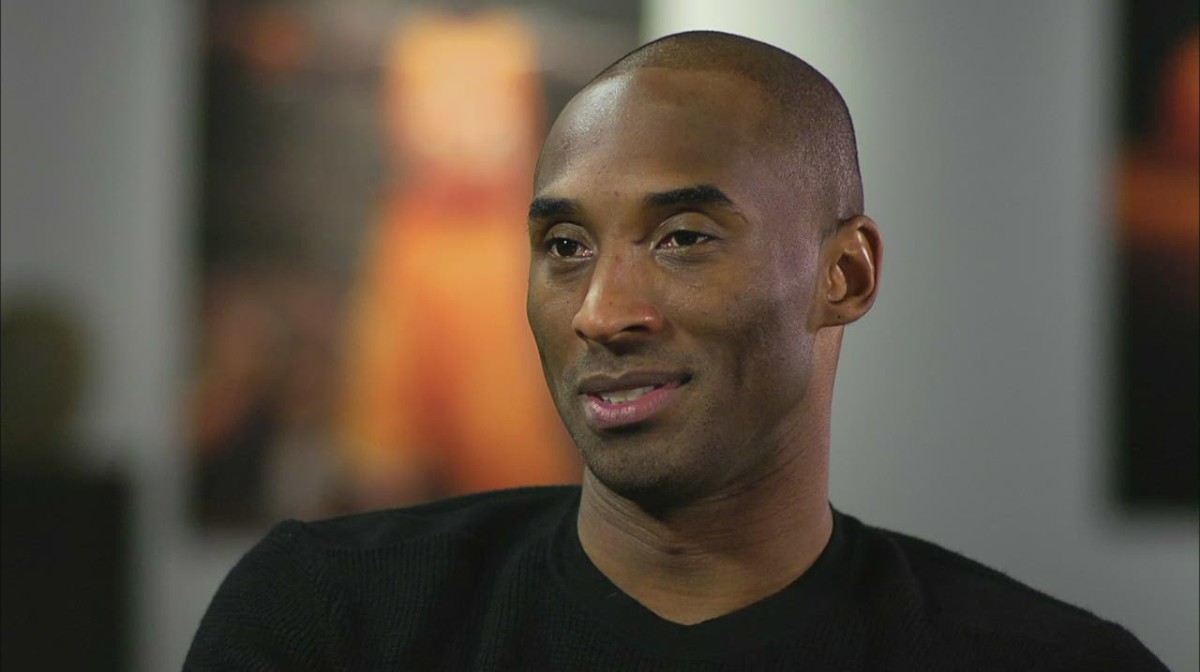
For those #TLDR disciples who just want the reason why, click this.
While procrastinating on some client writing earlier this week, I woke up from a nap and caught most of “Kobe: The Interview,” Kobe Bryant’s interview with Ahmad Rashād on NBA TV. It took place the morning the Lakers announced that Kobe was missing the rest of the 2014-2015 season with his torn rotator cuff. It put the 20-year vet in a barren and dusty crossroads for he is going to miss yet another season because of injury.
Love him, hate him, perceive of him as a “poor man’s MJ,” or what have you, if you can forget his “Colorado” experience, his accomplishments are nothing short of remarkable – and the closest anyone in this era will ever get to Michael Jordan.
Kobe Bryant’s actually humble beginnings: a refresher
For being a 6’7”, 185 lbs or so 17-yr-old when he entered the NBA out of high school – refresher: drafted by the Charlotte Hornets 1.0 (now the New Orleans Pelicans) and traded to the Lakers on draft night ‘96 for Vlade Divac – he was athletically gifted, but he certainly wasn’t the fastest player on the court. He wasn’t the best leaper. I’m still not sure how he won the slam dunk contest because he didn’t have the power that is usually needed to accompany the flare in order to win a slam dunk contest. And he certainly wasn’t the best shooter.
But very few get to be like Kobe Bryant, a child who’s seen what it takes to be a successful professional basketball player since he can remember. Much of his upbringing was watching his father, Jelly Bean Bryant, perform the craft he would love at a top level and be able to experience the process first hand.
Granted, most of it was in Europe, but if you had a chance to play pro ball for incredible money in Europe, wouldn’t you?
It’s one thing to see success as a child in incredible enough, but to develop the same love for the craft is something completely different. Usually, it’s a child’s impulse to feel like they’re rebelling from it in order to create their own identity – only to find out later in life that it was the rebellion that made them exactly like the thing from which they rebelled. The fact he took it, molded it, harnessed, drunk it in, and allowed himself to be baptized in what he saw to the point of obsessions is a testament to his competitiveness.
But that’s not what made me sit upright and linger on to a few more of his words
Why Entrepreneurs, Goal Seekers, and Dream Chasers should watch Kobe:The Interview
Rashād started probing Kobe a little deeper about the public perception that he’s a loner. Kobe denied it, and they both talked about he’s turned to social media in the last couple years to be more personable. They also volleyed back and forth about how tangible and professional he is with the media.
But just as it starts to feel like Kobe has successfully argued his point about being accessible, Kobe stopped running from the devil and admitted he really didn’t have close friends.
This is the part where I could find the clip on YouTube where he talks about it. It’s the best part of the interview. For all the clips the NBA sent out from this interview, there really wasn’t anything more incredible in his interview than of him talking about the sacrifices he made in his life to get 5 NBA World Champion rings in 7 attempts. He talked about how he wanted to go out, but he wanted to win more, so when others were enjoying the good life, he was in the gym, Jordan-ifying his jumpshot and working on developing point-guard like dribbling skills – when he wasn’t picking Tex Winter’s head about offensive philosophies.
You’ll just have to watch the interview in full.
Eventually, you have to be prepared for the fact that the process to your goals is gonna be cold, lonely, and filled with immersible uncertainty.
It seems as though loneliness is the non-sellable shit they seem to forget to talk about in self-help books. I supposed it wouldn’t make it sound as easy as they’d like you to believe it is.
It’s lonely. And before you string a few great days together, you’ll at best be able to pepper them between days that don’t get you anywhere. And then there’s going to be days where you’re not going to want to do what needs to be done. Keep it up, and you’ll find years that way.
Then there will be those side jobs done along the way that will feel like it’s taking you in the exact opposite direction than the ones your goals are in. It’s because it’s true. It’s call “side work,” because it pulls you aside, off the path you want to go in. You’ll find yourself mastering the art of procrastination, admiring the artwork on your craft beer, liking 20 different Zen / Buddhist self-help / positivity Facebook pages, wishing you could cash out the play money you won tonight on the World Series of Poker app, wondering how fresh the rings are in your Portland Starbucks coffee cup, and placing bets with on whether or not you can run that Starbucks Pike Roast K-Cup through the Keurig a second time so it will give you just enough caffeine to get you through the next task but not keep you up before the early morning infomercials take over FX Network.
That’s before you switch to Bulleit Bourbon & Diet Coke in a Ball mason jar to help pull you from the anxiety and into your passion – not that a habit should be made of such things.
But eventually, you learn to turn into the storm
Katie and I heard a podcast I heard on Beyond the To-Do List (or Inside the Owner’s Mind – it’s been 6 weeks). Whichever it was, it talked about how, eventually, the storm is going to rain down on you. You could run from it but then you’re worn out and it just rains on you for a longer period of time. The other option is to turn and walk through it. You’ll get coated in rain, but you get through it quicker and get to the drying the ring fingers that will, hopefully, display your own gold and diamond championship rings and make all those hours by yourself worth it.
So, good news. You’re not alone in your loneliness. We ‘re all feeling the cold shoulder sensation together.
“Some people feel the rain. Others just get wet.” – Roger Miller (not Bob Dylan or Bob Marley – as popular attributed to.)




Good to see you writing again Finn, your summary of a great athletes discipline reminds me of the outliers book. 10,000 hours right?
Add that book to “ones I need to read.” I’ve heard athletes like Charles Tillman talk about it as well. There’s definitely some truth to it from what I can tell.
Have you read it?
(Sent from my iPhone)